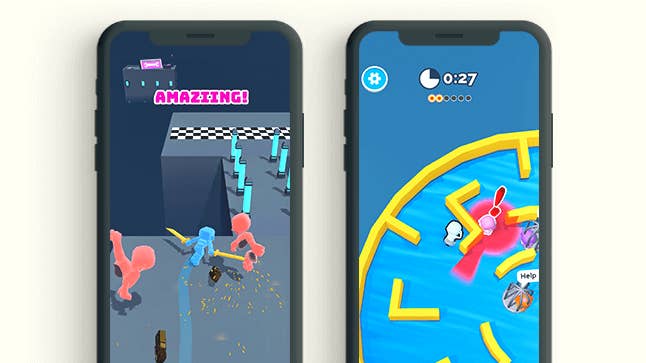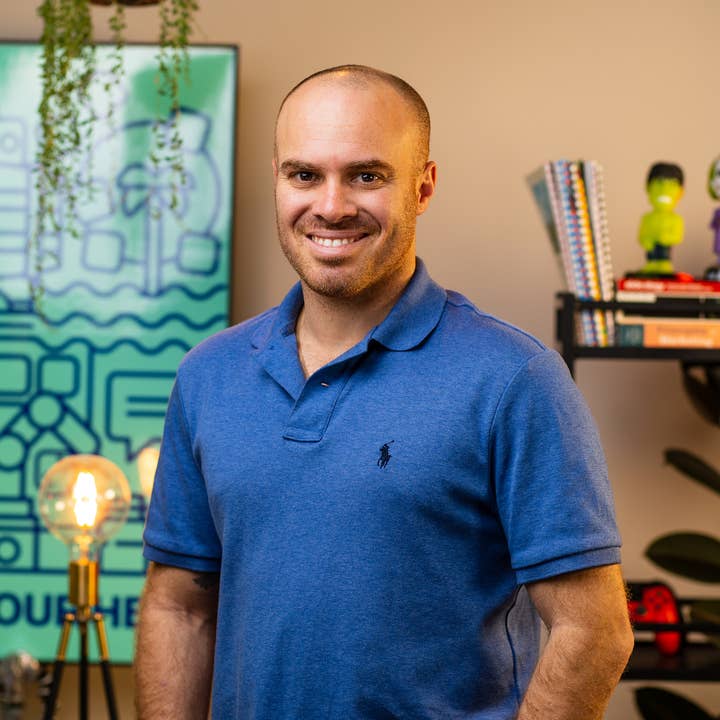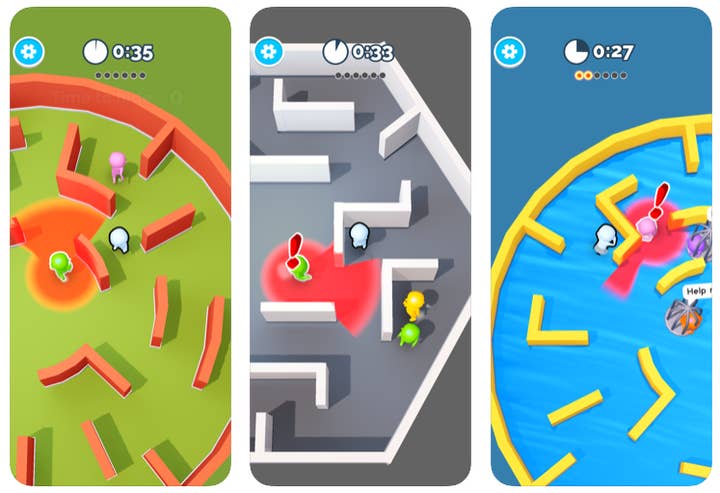What hypercasual mobile game publishers look for in developers
Supersonic Studios' Nadav Ashkenazy explains what it takes to get your hypercasual game published
Hypercasual games exploded onto the scene three years ago, growing into one of the largest mobile gaming categories in terms of installs.
Nearly 80% of install growth in the mobile gaming market came from hypercasual games in 2019. In the same year, 87 new hypercasual titles succeeded in breaking into and maintaining a place in the top ten for half a month, ten times higher than any other genre.
However, the market has become more competitive and saturated, and newcomers are increasingly turning to partnerships with publishers to turn their game concepts into marketable, profitable products.
With the leading publishers receiving hundreds of pitches every week, game developers struggle with standing out enough to secure a partnership and launch their game successfully. In this article, we share some of the top qualities that publishers look for in game developers.
Marketing manager first, game dev later
"The greatest trick hypercasual ever pulled was convincing the world it was a genre. It is in fact a business model" - Tom Kinniburgh, Mobile Free to Play
When we're assessing a potential partnership with a game developer, the first and most fundamental test their game needs to pass is marketability.
Anyone familiar with this space knows that the business model revolves around finding a concept with extremely high IPMs (installs per mille), and in turn low costs per install, with no targeting, enabling developers to acquire users cheaply and at scale.
"When we run initial marketability tests, we advise devs to first build a minimal viable product"
Because hypercasual users have relatively lower lifetime value, generating economies of scale is crucial to make significant profit from this genre. Paying a high CPI for users that have low revenue per user and LTV means you will lose money and your hypercasual game will be unsustainable.
When we run initial marketability tests with game developers, we advise them to first build an MVP (minimal viable product). The goal is to only build a few levels of the game -- enough to be able to create a few different video ads to test out.
At this early stage, because statistically there is a high chance the game will not have a strong enough market appeal, we recommend our partners to avoid wasting resources on metrics such as retention and play time. For the initial marketability tests, the priority has to be CPI and if it's promising, then it's time to begin designing and building the game in more detail.

At this early stage, game developers need to understand the reality of the business and become marketing managers first and foremost. This requires pragmatism: we've seen countless developers become attached to ideas, and even after sub-par early CPI tests, they insist on trying to make a concept work.
Don't make this mistake and waste two months on a game without potential -- doing so is a surefire way to eventually run out of cash. Instead adopt a marketing mindset of "fail cheap and fail quickly," and constantly test new concepts.
In practice, this means a culture of rigorous testing and research, underlined by the acknowledgement that most ideas fail the marketability test.
"Developers need to understand the reality of the business and become marketing managers first and foremost"
In terms of ideation, from our experience, some of the most viral concepts come from proven hypercasual mechanics, global trends (like toilet paper-themed games during Corona) and YouTube video trends (like Wheel Smash, Tie Dye and many more that were inspired by viral videos in the social networks).
Constantly researching social media trends on platforms from YouTube to TikTok, and thinking of ways to innovate and leverage them into marketable game ideas can be a great opportunity. Always thinking about the marketing angel first gives a publisher confidence that your first great game is not going to be a one-hit wonder, since you have the understanding to potentially become a "serial developer."
Build fast
So, you've found a viral concept and made a prototype for a hypercasual game spin-off, and its CPI is highly competitive. Welcome back, you're now a game developer again, and what's needed is speed and quality.
In a market where cloning is always a risk, you don't want to give competitors a chance to steal your winning new concept and get to market first. Not only that, but trends are fast-changing and short-term: that viral challenge you based the prototype on might not be around in few months, and if it is, the high IPMs you first experienced most definitely won't be.

Aim to develop the game so it's ready to launch within no more than a month. We've seen hypercasual teams fail in the past having conquered the marketability test, but then take far too long to build the game. Publishers need to be confident in a development team's ability to rapidly build their concept into a final high end product.
While we look to speed, we also want to see a high level of execution: solid progression mechanics, a natural flow, and visually appealing artwork and design.
Analytical mindset
As a publisher, we want to release games that will generate the most revenue. To achieve this, we both -- publisher and developer -- need to do everything we can to ensure the game stays profitable at scale for a long time.
This leads us to the third quality we need to see from a hypercasual developer: strong data analysis capabilities which can be leveraged to improve their game both before and after global launch.
This involves the ability to and comfort with analyzing performance metrics such as retention, session length, stickiness and number of sessions, level completion, identifying blocks and potential issues with difficulty, and so on.
Some developers fall into the trap of thinking the job is done once their game has been launched globally, however the truth is quite the opposite -- their job is only just beginning. A mobile game, whether it's hypercasual or hardcore, is a living entity that needs frequent updates and alterations in order to keep users engaged, and to continue generating revenue.
Team player
Underlying all these qualities that go into making a great hypercasual game is being a team player. We're not looking to just tell someone what to do in a game, we prefer to work with someone who is a genuine partner in the process. That's why we look for developers who show a willingness to collaborate closely with us, and with whom we can build a strong relationship based on a foundation of openness and honesty. For us, a partnership is far more than a business transaction, which is a philosophy that our existing partners have really appreciated.
Being a team player also means understanding your strengths and weaknesses: sometimes we see developers struggle to let go of their responsibility over certain aspects of the business, even if it's not their strong point. We look for partners who recognize where they should focus their attention, and where they should pass the baton on to us. With experts across the board, our team can adapt to any studio's needs.
Hypercasual installs more than doubled between December 2019 and March 2020, and as the market continues to boom, there is a huge opportunity for developers to make it big -- despite the high level of competition. By understanding where the publishing partner is coming from and what they're looking for, the likelihood of you succeeding is accelerated.
Nadav Ashkenazy is the GM of Supersonic Studios, IronSource's mobile game publishing activity. Ashkenazy oversees all aspects of Supersonic, including onboarding developer partnerships, game development, monetization and user acquisition, data analysis, and technical support.








